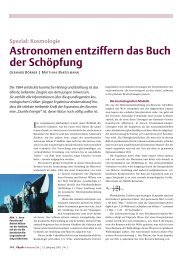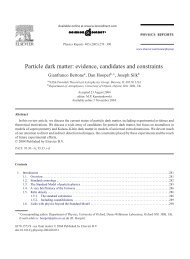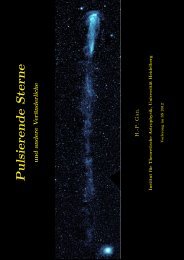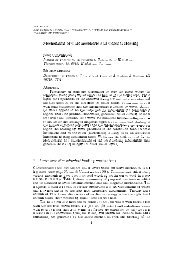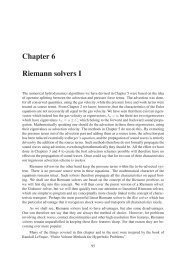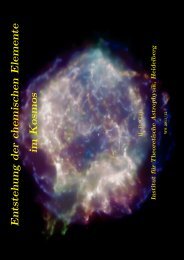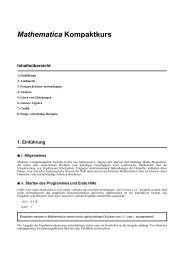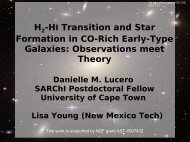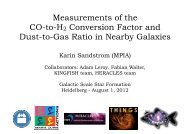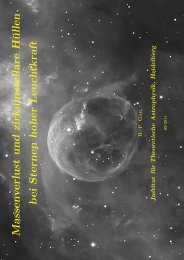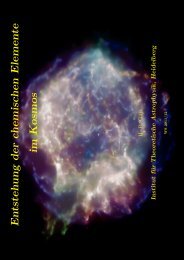low-z analogs for high-z star forming galaxies
low-z analogs for high-z star forming galaxies
low-z analogs for high-z star forming galaxies
Create successful ePaper yourself
Turn your PDF publications into a flip-book with our unique Google optimized e-Paper software.
Context: High SFR in all blue <strong>galaxies</strong> at z=1: not just in mergers<br />
(from Kai Noeske, BJW et al 2007; also X. Zheng et al 2007)<br />
At z=1, the global SFR is 10x <strong>high</strong>er than today – in what <strong>galaxies</strong> does this occur?<br />
DEEP2 sample, using SFR from both far-IR (Spitzer/MIPS) and nebular emission lines.<br />
The scatter in the SFR-stellar mass relation is ~0.3 dex:<br />
“main sequence,” implies that extreme bursts are rare.<br />
The overall SFR declines gradually <strong>for</strong> the entire sample:<br />
implies that the global decline of SFR is due to a decline in all SF <strong>galaxies</strong>.<br />
Locally, LIRGs are unusual and LIRG/ULIRGs are typically major mergers,<br />
but at z=1, most <strong>star</strong> <strong>for</strong>ming <strong>galaxies</strong> at M*>1e10 are LIRGs, SFR > 10 Msun/yr.<br />
Local IR-luminous <strong>galaxies</strong> may not be good predictor of <strong>high</strong>-z properties.



